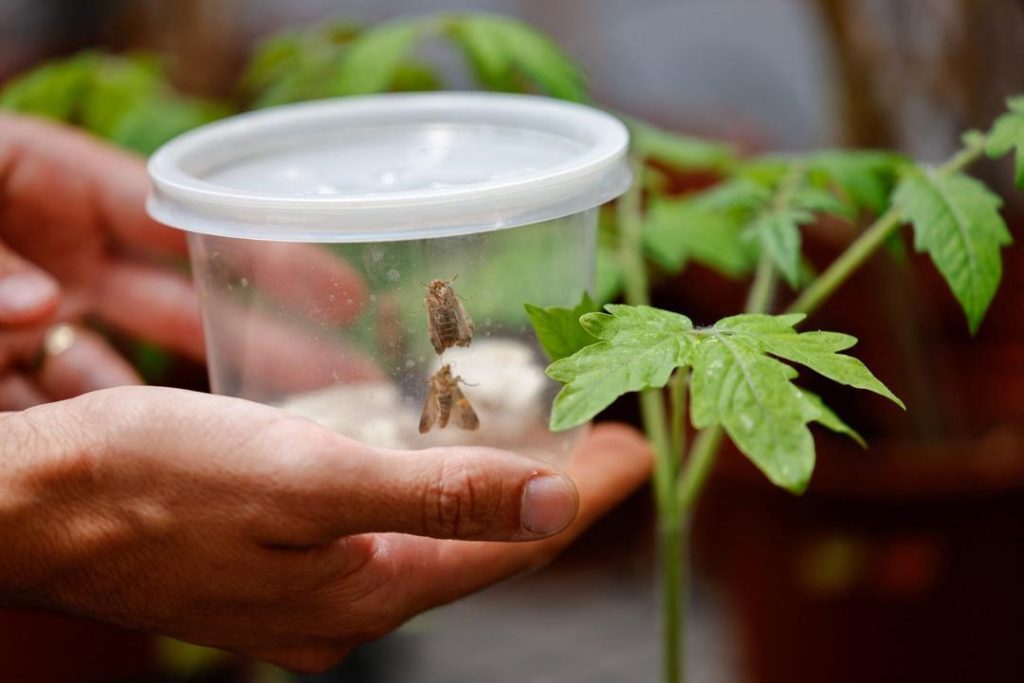
In a 1st, Scientists Find that Insects Listen to Sounds Made by Plants
In a groundbreaking discovery, a team of scientists from Tel Aviv University has found that insects and plants interact through sounds. The study, published recently, revealed that female moths can detect distress sounds emitted by dehydrated tomato plants and thereby decide not to lay eggs there. This remarkable finding has significant implications for our understanding of the complex relationships between plants and insects.
The research, led by Dr. Rotem Sivan, a biologist at Tel Aviv University, involved monitoring the sounds emitted by tomato plants under different conditions. The team found that when a plant is dehydrated, it produces a specific sound, which is inaudible to humans. The sound is a result of the plant’s attempt to conserve water by closing its stomata, the tiny openings on the surface of the leaves.
The researchers then conducted experiments to see if insects could detect these sounds. They placed female moths, which are attracted to tomato plants for reproduction, near the plants. The team found that when the moths were exposed to the distress sounds emitted by the dehydrated plants, they were less likely to lay eggs on those plants.
“We revealed the first evidence for acoustic interaction between a plant and an insect,” the team said in a statement. This finding suggests that plants and insects are capable of communicating with each other through sound, a previously unknown form of interaction.
This discovery has significant implications for our understanding of the complex relationships between plants and insects. For centuries, scientists have known that plants and insects interact through visual and chemical cues, such as flowers attracting pollinators with color and scent. However, this study shows that sound can also play a crucial role in these interactions.
The team believes that this form of communication could be widespread in nature, with plants and insects using sound to convey information about their condition, such as stress, disease, or injury. This could have important implications for agriculture, as farmers could potentially use this knowledge to develop new methods for controlling pests and improving crop yields.
For example, farmers could use sound-emitting devices to deter insects from damaging crops. This could be particularly useful for crops that are susceptible to insect damage, such as tomatoes and cucumbers.
The study also has implications for our understanding of plant behavior. Plants have long been thought to be passive organisms, simply responding to their environment. However, this study suggests that plants are capable of actively communicating with other organisms, including insects, through sound.
This finding also raises questions about the complexity of plant-insect interactions. For centuries, scientists have viewed plants and insects as separate entities, with plants being the “passive” receivers of insect activity. However, this study suggests that plants and insects are intimately connected, with plants playing an active role in shaping the behavior of insects.
The study’s findings have also sparked interest in the potential for using sound-emitting devices to control pests in other ecosystems. For example, researchers could use sound-emitting devices to deter mosquitoes from breeding in standing water.
The study’s lead author, Dr. Rotem Sivan, believes that this discovery has significant implications for our understanding of the natural world. “This study shows that plants and insects are capable of communicating with each other in ways that we never thought possible,” she said. “It’s a reminder that there is still so much to learn about the natural world, and that the most unexpected discoveries can have significant implications for our understanding of the world around us.”
In conclusion, the discovery of insect-plant communication through sound is a groundbreaking finding that has significant implications for our understanding of the complex relationships between plants and insects. This study suggests that plants and insects are capable of communicating with each other through sound, and that this form of communication could be widespread in nature. As researchers continue to explore this phenomenon, they may uncover new and innovative ways to control pests and improve crop yields.






